Directional tyres are marked on the side, i.e. on the tyre's sidewall. You will see the word "Rotation" or "Direction" written here. Next to it, there is a small arrow which indicates the tyre's forward direction (rolling direction).
Directional tyres are marked on the side, i. e. on the tyre's sidewall. You will see the word "Rotation" or "Direction" written here. Next to it, there is a small arrow which indicates the tyre's forward direction (rolling direction).
You might have noticed it before: Directional tyres have a "V" shaped profile as opposed to a "U" profile. This not only looks sporty, but also fulfils a special function: The arrangement and the inclined shape of the tread grooves ensure that any water is channelled very quickly onto the road and discharged immediately to the outside.
This feature gives you special protection against aquaplaning. But not only that: the special profile shape also ensures stability at high speeds as well as on snow-covered ground. This is why winter tyres are often directional.
Many summer tyres are also directional tyres. After all, heavy rain showers also occur in the warm months of the year.
The special tread pattern is ideal for sports cars and high speeds.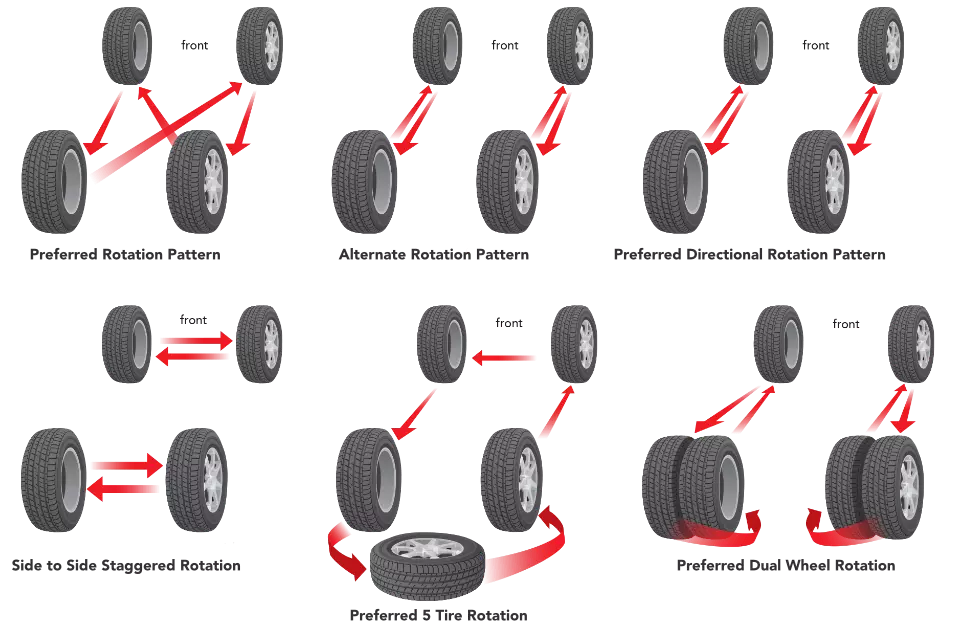 They also have the following advantages:
They also have the following advantages:
In contrast to asymmetric tyres, directional tyres are not suitable for use as a spare tyre. This is because they are rim-dependent. This means that, as they are mounted on the rim, the tyres are only suitable for one side of the vehicle and cannot be used flexibly on either side in the event of a breakdown.
Mounting directional tyres
The special tread cannot work properly if directional tyres are mounted the wrong way round. This means that the tyres will not hold the road very well and the risk of aquaplaning will be greater. Incorrectly mounted tyres will also wear down faster and they will be louder when driving.
Correct mounting is very important to ensure that directional tyres work to their full effect. This is why you should always abide by the marking on the tyre's sidewall.
This is why you should always abide by the marking on the tyre's sidewall.
Barum. A brand of Continental.
Good tyres. Good deal.
There are benefits to directional tires and it is good to know if your tires are directional so that you don’t improperly rotate them. But how can you tell?
Not only is it important to know what directional tires are and how to tell if you have them, but it is also good to know why it is important to know if you have directional tires and how to know which way they should be facing.
You can check the sidewall because a directional tire will have an arrow pointing towards the front end of the vehicle or say “this side out” to indicate which side of the car it is meant for. You can also check for the v pattern on the tread.
This article was written from personal experience combined with expert advice.
Directional tires have a different tread pattern than symmetrical or asymmetrical tires.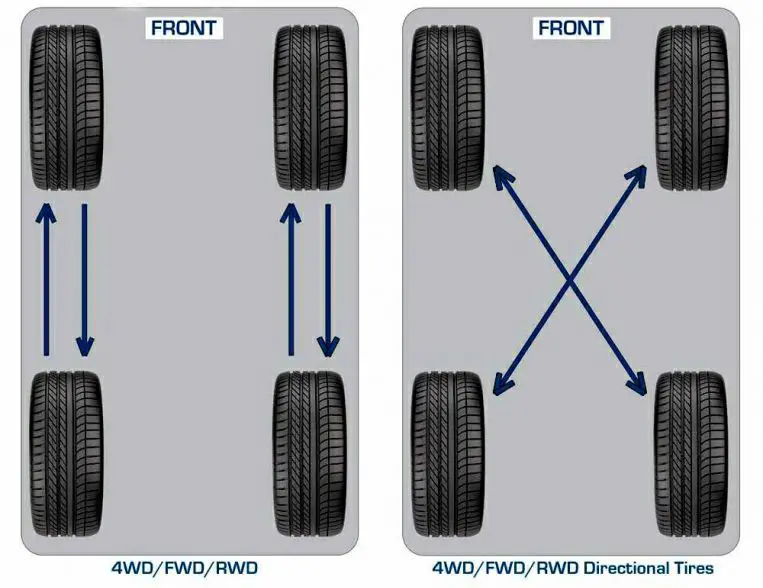 The pattern on the tread of directional tires is only designed to go one direction. This creates a v or y shape when you look at the tread pattern.
The pattern on the tread of directional tires is only designed to go one direction. This creates a v or y shape when you look at the tread pattern.
Directional tires are also called unidirectional tires and are better for performance cars and high speed. Directional tires move the water away which makes them better for preventing hydroplaning.
Since directional tires have to face a certain direction, they cannot be rotated to the other side of the vehicle without more work. To rotate them to the opposite side of the vehicle, they have to be dismounted and remounted on the wheels in the correct position. This is why most drivers that have directional tires tend to rotate them from front to back or vice versa instead of doing a full rotation. However, this can lead to uneven tread wear and poor gas mileage.
Even though directional tires are more expensive than the average symmetrical and asymmetrical tires, there are some great benefits to be aware of.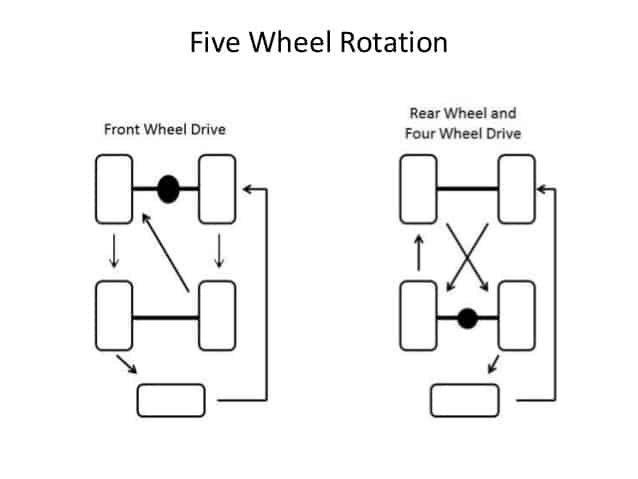
The v-shaped tread on directional tires gives them improved handling ability in wet conditions. This is because the water will be channeled and pushed away from the tires. They also work well on dry surfaces. This is true even when traveling at higher speeds. Most race cars and sports cars use directional tires because of their handling ability at higher speeds. This is because of the better traction that directional tires create.
Also, directional tires can provide you with improved fuel efficiency. This is because they have less resistance to rolling. There may also be an improvement in fuel efficiency when driving on wet surfaces because of the tendency to channel the water away. They will also protect you against hydroplaning.
Directional tires also tend to be good in different conditions. They can adequately handle snow and mud for example. They are often much quieter than other tire types as well. Finally, many people like the way directional tires look because they have a fast, sleek appearance.
Besides the increased price compared with other tires, there is only one major downside to directional tires. The tread on unidirectional tires will typically be shorter than with other types of tires. This is because users tend to only rotate them front to back. However, if you do not mind the extra labor and cost of rotating them to the other side of the vehicle, then they can last just as long as any other tire.
The easiest way to tell if you have directional tires is to read the sidewall. The sidewall of a tire contains a lot of information including the direction on a directional tire. There are two different things that may indicate that the tire is directional. The first is an arrow pointing in the direction of the forward motion or the front end of the vehicle. The second indicator on the sidewall will be the words “This Side Out” that indicate that to rotate to the opposite side the tire would have to be dismounted and remounted facing the correct direction.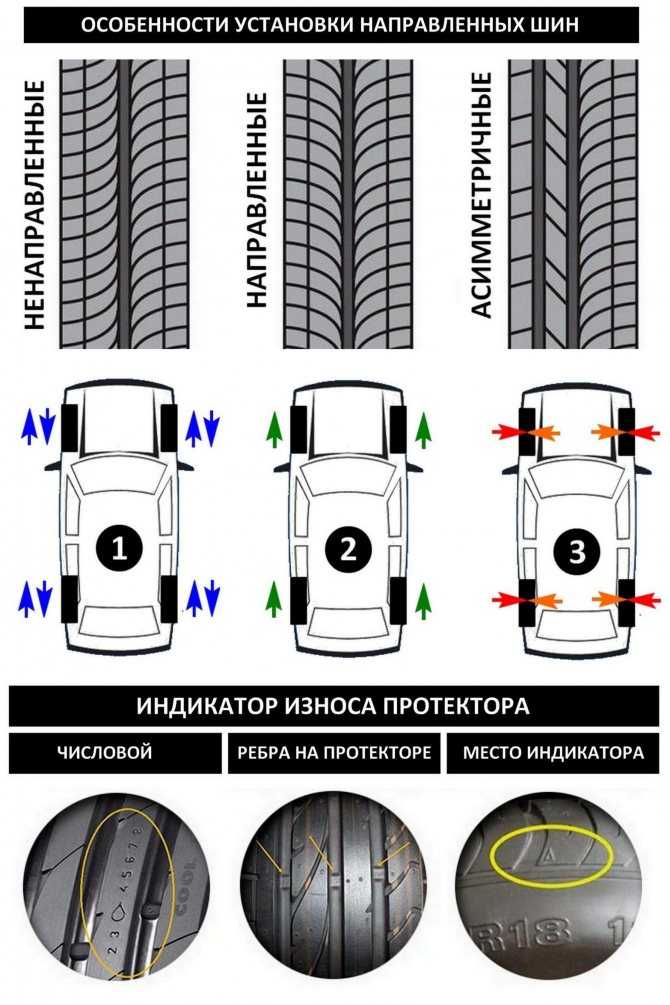
Asymmetrical tires will also require correct mounting onto wheels because they have an inside face and an outside face. However, unlike directional tires, the outside and inside are the only things that matter and they can point any direction.
Another way to tell if you have directional tires is by looking at the tread pattern on the tires. A directional tire will have a unique looking tread compared with other types of tires. The tread pattern will form a v-shape or a y-shape when you face the tire from the front. This is different from symmetrical tires because a symmetrical tire will have a tread pattern that partially goes towards both directions so that it does not matter which way the tire is mounted on the vehicle.
It is also important to check to see if all of the tires on your vehicle are directional. You should never assume that just because one or both front tires is directional or nondirectional that the other ones will be the same way. It is entirely possible to have a mixture of directional and nondirectional tires on the same vehicle.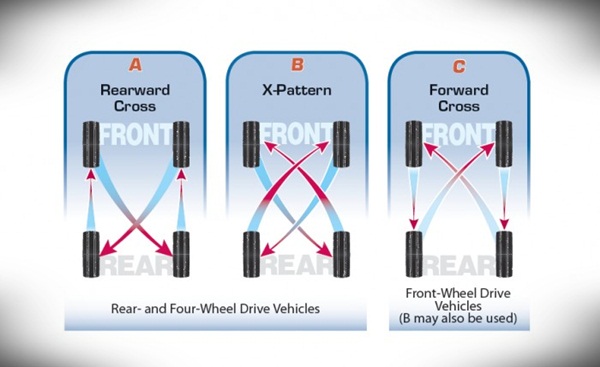
There are a couple of reasons why it is important to know if your tires are directional whether they are tires already on your vehicle or tires that you plan on mounting to your wheels. Even though a unidirectional tire that does not face the right way is not necessarily a safety hazard, it does negatively impact the tire and vehicle performance and may reduce energy efficiency and it should be corrected. Finally, if they are not installed correctly, the tread can wear down much faster. Tread that is worn down too much does, in fact, pose a safety hazard.
The first reason why it is important to know if the tires are directional is when you are preparing to mount them to a vehicle. When you are mounting directional tires, you have to make sure they are facing the correct direction. Therefore, not only do you have to know if they are directional tires, you also have to know which way they need to be installed.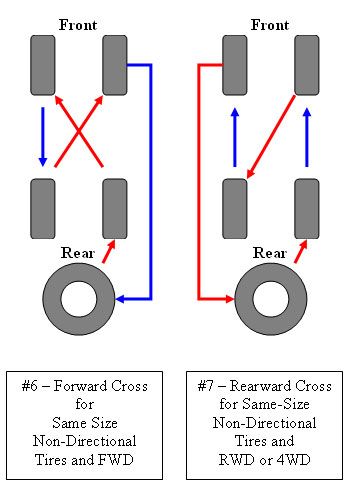
You can double check for an arrow on the sidewall that points to the front of the vehicle. Alternatively, you can look at which way the tires face by looking for the v shape in the tread. This shape should be visible when looking towards the front surface of the tire.
Another reason why it is good to know if your tires are directional is for rotating. Since they are made to face a single direction, they cannot be rotated in the same way as other tires. When nondirectional tires are rotated, they are typically moved from the front to the back and vice versa and, depending on if it is rear wheel drive or front wheel drive, they will also move to the opposite side of the vehicle. With directional tires, the process is not as simple.
When you are preparing to rotate the tires on a vehicle that has directional tires, you will have to follow a different procedure. Typically, you can still rotate the front and rear tires as long as they stay on the same side. This is beneficial, but doing this throughout the tires’ lives can wear out the tread fast and unevenly which means new tires sooner. The best way to properly rotate directional tires requires more skill, labor, and cost than a typical tire rotation.
The best way to properly rotate directional tires requires more skill, labor, and cost than a typical tire rotation.
The best way to properly and adequately rotate directional tires is to remove the tires completely and remount them in the correct direction at the proper rotation place. This would depend on whether the vehicle is rear wheel drive, all wheel drive, or front wheel drive.
The article provides information on the correct installation of tires and features of the tread direction.
A tire is a multi-layer shell of complex design that is attached to the wheel rim. The shock-absorbing part is rubber or polymer, with a printed pattern, which, as a rule, indicates the direction of rotation of the wheel. The pattern is applied to the protector. The tread is the working area that creates the grip of the car with the road.
Tires are classified according to the following criteria:
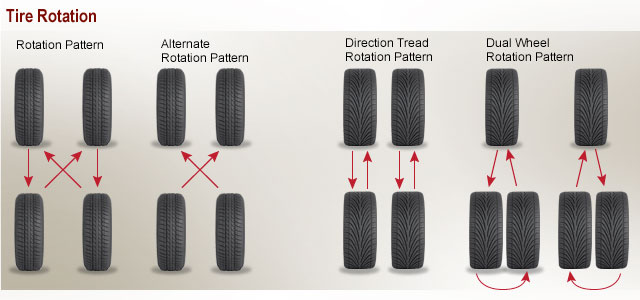
Understand! Universal in reliability while driving are inferior to specialized ones. The directional ones provide better grip on wet roads at high speeds. If you correctly determine the direction behind the rotation of the wheels, the effect of aquaplaning disappears, which guarantees good rubber grip in puddles.
Rubber design features are distinctive features that enhance the driving characteristics of the vehicle. It is important to understand them for the correct choice of replacement rubber.
Tubeless, long lasting elasticity in the event of a puncture. The rubber tightens around the stuck object. It does not overheat when driving, due to heat dissipation by the open (metal) part of the rim. Unlike the chamber one, there are increased requirements for rims, the need to apply additional sealant at the junction of the rim and rubber, and the complexity of installation. Tubeless are used more often, properly mounted - high wear resistance.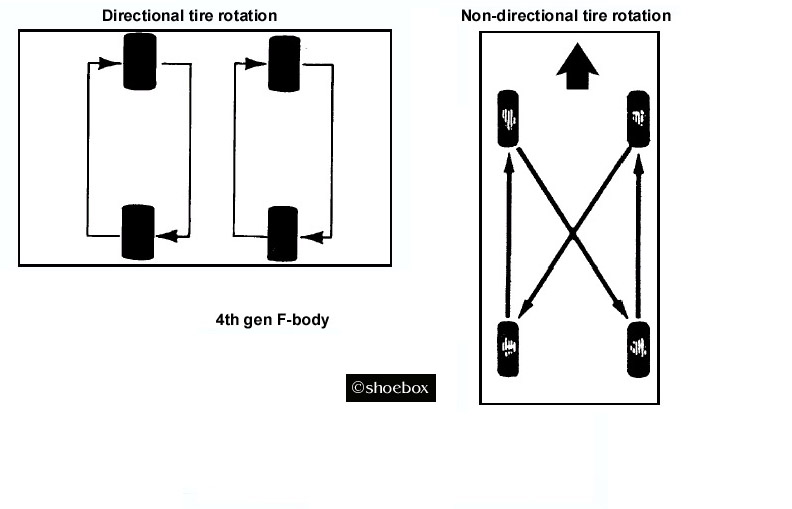
The difference between bias and radial tires can only be correctly identified by the markings. Radial - r. Diagonal - do not have a letter index. You can understand the marking of the diagonal ones by the presence of the designation TT - operation with a camera. Those who care about speed need to understand the differences.
Summer Drive Protection Sound Comfort
Rating:
4.5
Tires Goodyear Eagle F1 Asymmetric 3 SUV
Summer Drive Protection
Rating:
4.5
Tires Goodyear Eagle Sport TZ
Summer Drive Protection
Rating:
4.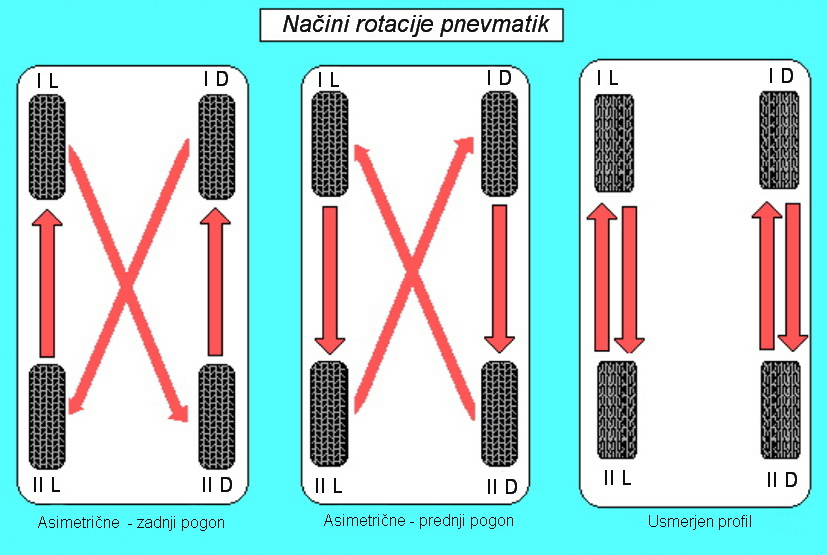 5
5
Tires Goodyear EfficientGrip 2 SUV
Summer Drive Protection Run On Flat
Rating:
4.5
Tires Goodyear EfficientGrip Performance
Winter Drive protection
Tires Goodyear UltraGrip Arctic 2 SUV
Winter Drive Protection Sound Comfort
Rating:
4.5
Tires Goodyear UltraGrip Ice 2
Winter Drive Protection Sound Comfort
Rating:
4.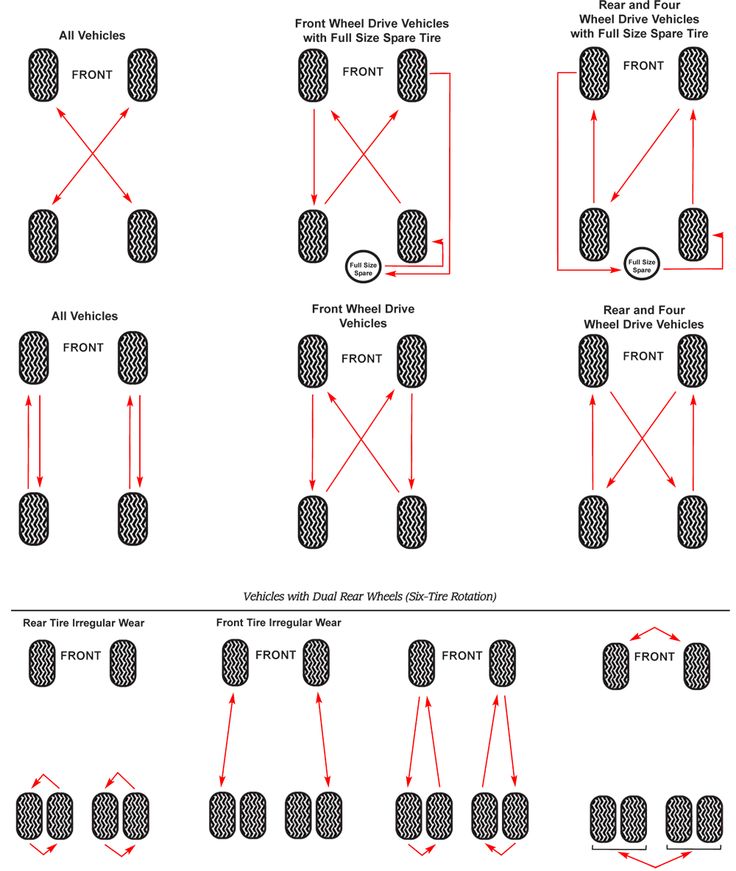 5
5
Tires Goodyear UltraGrip Ice SUV
Winter Drive protection
Tires Goodyear UltraGrip Performance+ SUV
All season Drive Protection
Rating:
5
Tires Goodyear Vector 4Seasons Gen-3 SUV
Summer Drive Protection Run On Flat
Rating:
4
Tires Goodyear Wrangler HP All Weather
All season Drive Protection
Rating:
4.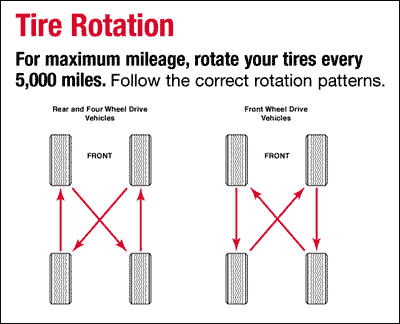 5
5
Tires Goodyear Vector 4Seasons
Summer
Rating:
4.5
Tires Goodyear Wrangler All-Terrain Adventure with Kevlar
Summer Drive Protection
Rating:
4.5
Tires Goodyear EfficientGrip SUV
Summer Drive Protection Run On Flat
Rating:
4
Tires Goodyear Eagle F1 Asymmetric SUV
Tire tread provides traction.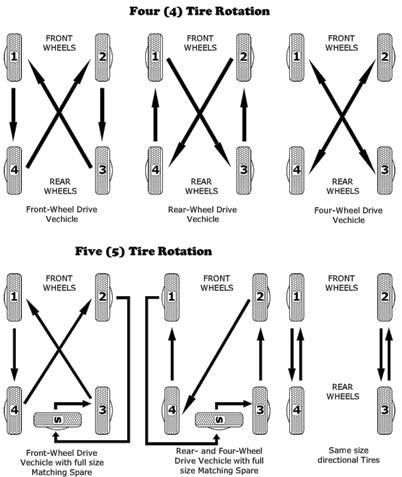 You can determine by the tread:
You can determine by the tread:
Asymmetrical tread pattern is larger on the outside. Do not purchase with even the slightest difference in the pattern - the tires rotate with a minimum lag - uneven grip with the roadway. Especially important for the highway, sharp descents.
Before determining the direction of a tire, it is important to know that Goodyear's tire direction marking for an asymmetric pattern is: LEFT; RIGHT - right; outside - outer side, inside - inner. install tires on the car according to the pattern on the tread or arrow.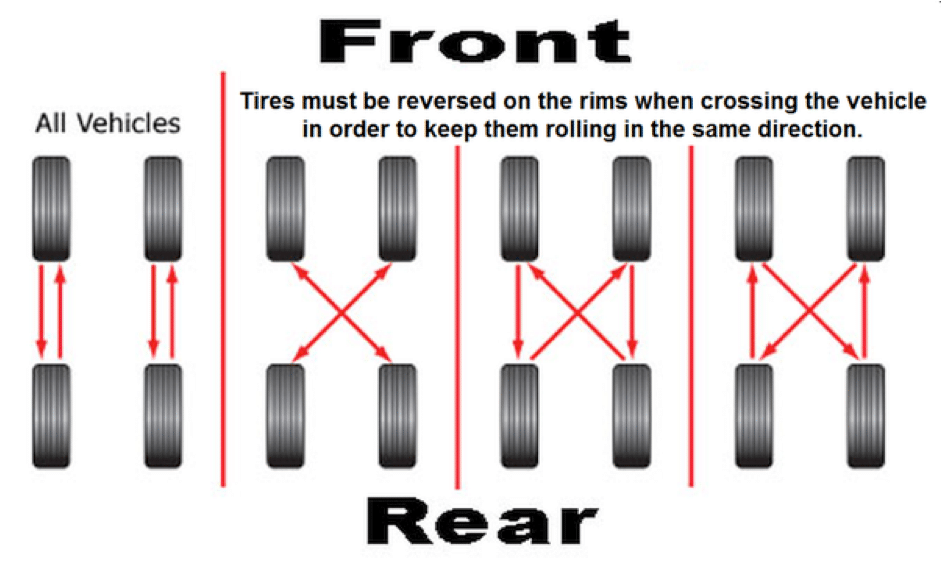 If symmetrical - navigate along a symmetrical pattern, its direction must coincide with the direction of movement of the wheel. If you need to install in the direction - the correct designation is ROTATION - rotation.
If symmetrical - navigate along a symmetrical pattern, its direction must coincide with the direction of movement of the wheel. If you need to install in the direction - the correct designation is ROTATION - rotation.
How to find out the direction if there is no marking - herringbone pattern? Rotate the tire in both directions - the top of the "herringbone" should be the first to touch the road. This is the correct way to install a wheel without a direction marking.
Recently, manufacturers have switched to symmetrical wheels, as it is impossible to know which one will fail. Correct replacement scheme:
It is also worth understanding that it is impossible to use anti-corrosion agents for processing fasteners on the road - imbalance.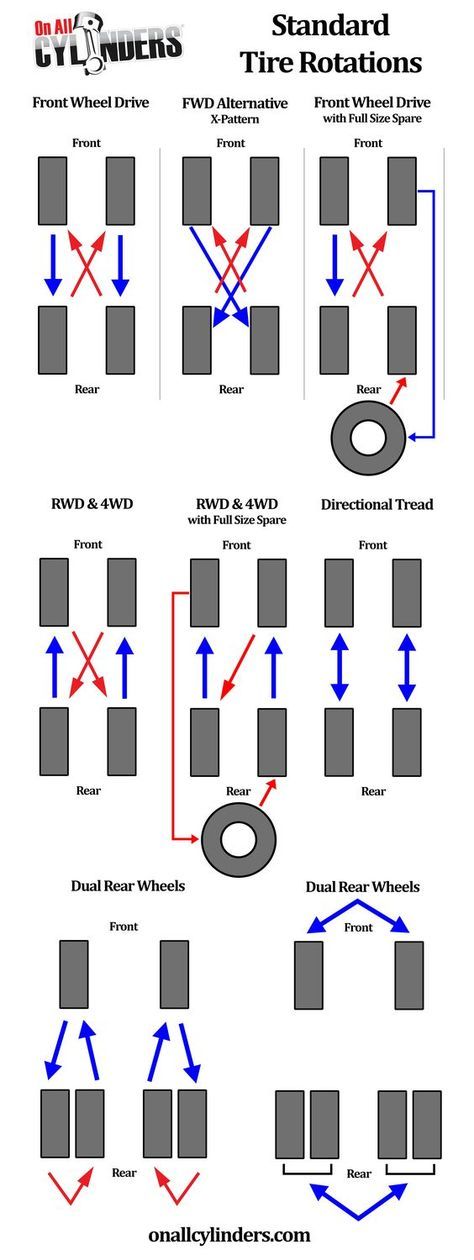 You can recognize the accuracy of balancing by the absence of knocking. In the same way, you can find out the correct installation.
You can recognize the accuracy of balancing by the absence of knocking. In the same way, you can find out the correct installation.
Correct setting is impossible without rotation balancing on a special machine. Installing a tire without a tube is impossible without the appropriate equipment. It is important to understand that it is impossible to put rubber from different manufacturers on 1 vehicle - non-uniform depreciation is the result of suspension knock. You should not save on carrying capacity and elasticity, replacing the chassis will cost more.
Direction of tire rotation
If the car leads to the side while driving and the tires wear out quickly - why can this be?
Repeated wheel alignment is made, but the problem does not disappear? This may mean that the tires are not installed correctly.
Before installing tires, it is necessary to determine the direction of the tire, because almost every tire has a unique tread pattern that fully reveals itself only when installed correctly.![]()
Content:
All car tires are divided by several classifications:
varieties of tread drawings
Import that all "Inside" signs are in the direction of the driver!
Correctly determining the direction of rotation of the tire is quite simple - when the car moves forward, the herringbone (tread pattern) should be the first to touch the road surface. When stopping, it is necessary that the tread pattern look in the opposite direction to the movement.
The determination method is suitable for both summer and winter tires.
Direction of tire rotation
Some tires (eg Bridgestone) can be interchanged. This is done only crosswise. This means that it is possible to drive 45-60 thousand kilometers, and after that change the location of the wheels.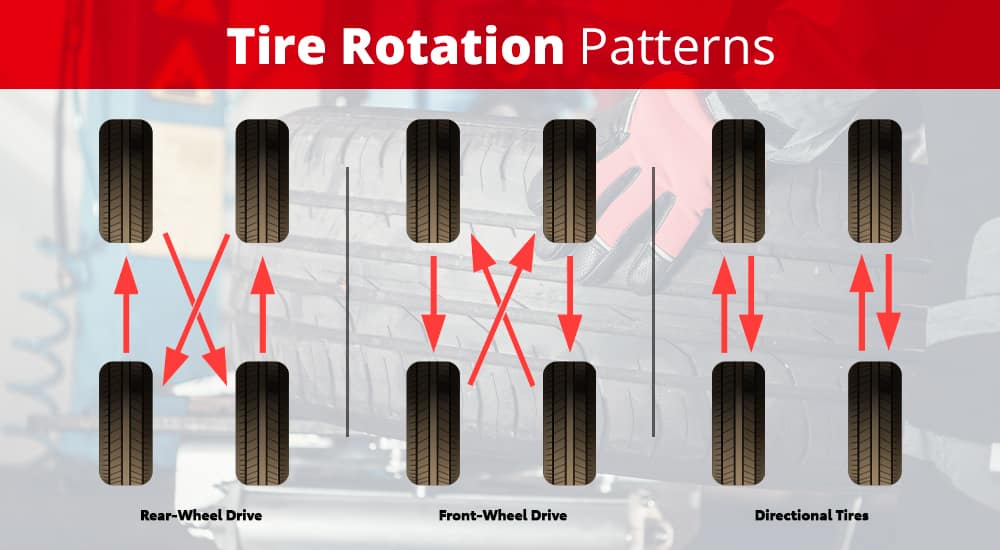 In place of the right rear, it is possible to put the front left, and in the left rear - the front right. This can be done with the front wheels, but in a strictly defined order.
In place of the right rear, it is possible to put the front left, and in the left rear - the front right. This can be done with the front wheels, but in a strictly defined order.
If the direction of tire movement is set, the wheels are rearranged on one side, i.e. front tires are changed to rear, and vice versa.
When the tires are symmetrical, it is possible to change the arrangement in any order.
Asymmetric Tires
Installing asymmetric Bridgestone tires doesn't require much skill if you remember a few tips. The inscriptions "Inside", "Outside" must be strictly installed according to the rules.
Directional tires must be installed so that when driving, the wheel moves in the direction indicated by the arrow. When installing, it is necessary to focus on moving forward.
Symmetrical (non-directional) tires are optional. Therefore, they do not have any instructions for installation.
Important: if at least one wheel is installed incorrectly, then driving will deteriorate sharply, and tires will quickly become unusable!
Installation is best done as follows: